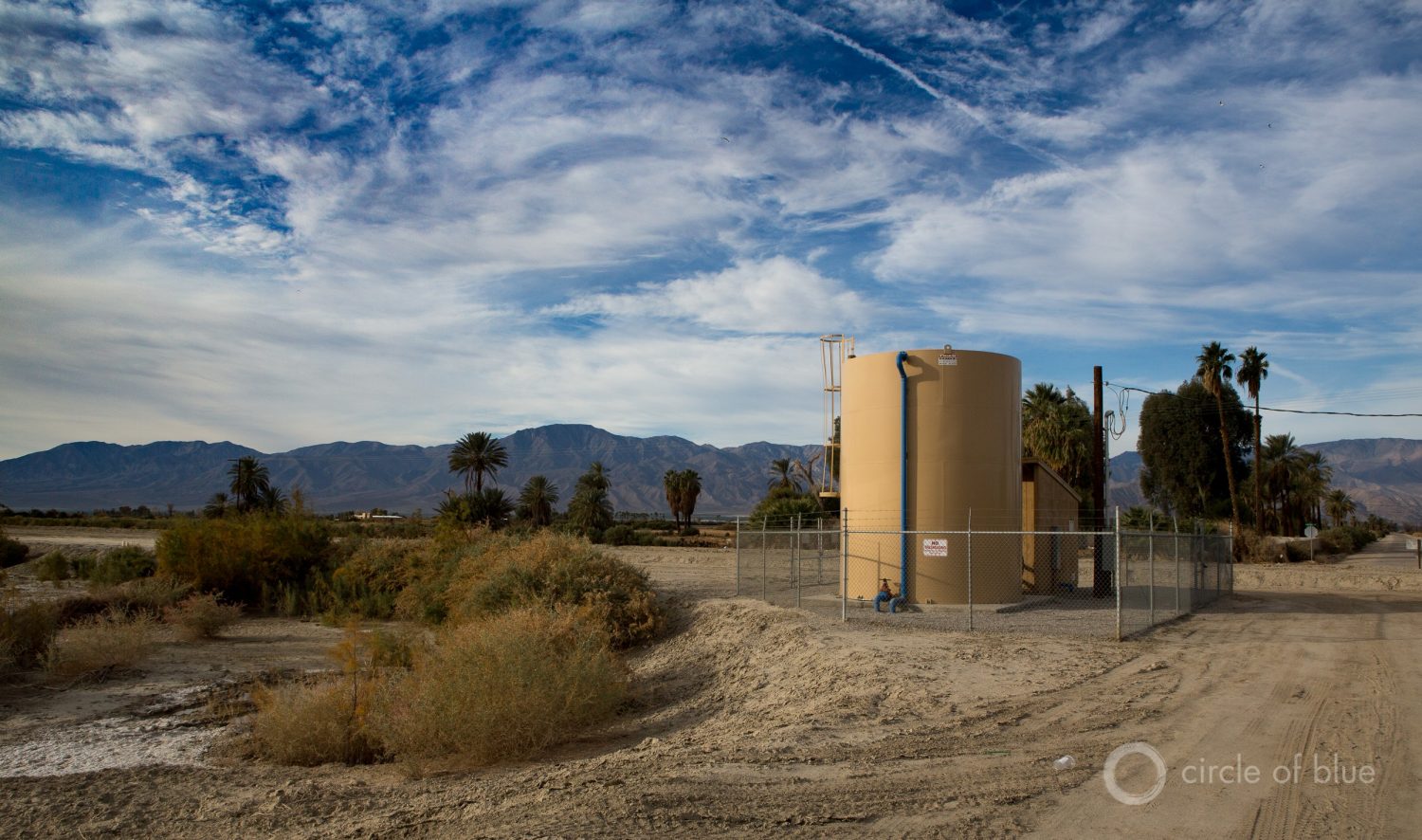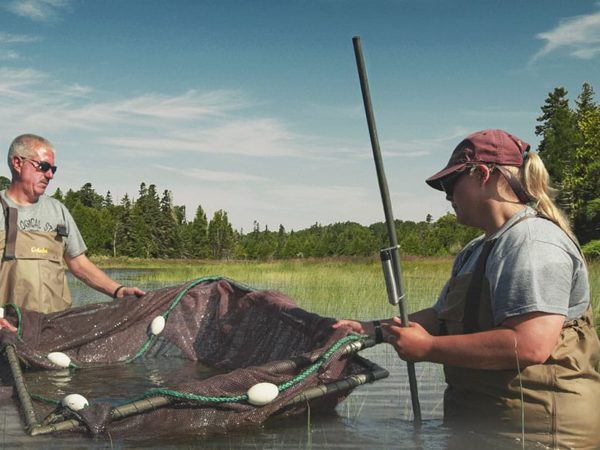
By Brett Walton, Circle of Blue
The Great Lakes News Collaborative includes Bridge Michigan; Circle of Blue; Great Lakes Now at Detroit Public Television; Michigan Public, Michigan’s NPR News Leader; and who work together to bring audiences news and information about the impact of climate change, pollution, and aging infrastructure on the Great Lakes and drinking water. This independent journalism is supported by the Charles Stewart Mott Foundation. Find all the work HERE.
Contests for control of the White House and Congress are the main events in the upcoming national elections. Those results will determine the direction of federal water and environmental regulation.
The agenda-setting national races are not the only ones to watch on November 5. At the state and local level, ballot measures give voters an opportunity to influence policy and spending decisions. Several of those measures relate to water.
There are fewer big-dollar measures in 2024 compared to past years. But many smaller considerations dot ballots from New Mexico and Minnesota to Colorado and California. Water infrastructure spending is a typical ballot question, and one that voters generally endorse. Three states and a handful of towns and counties will ask voters to approve funding measures for land conservation, water quality protection, and climate resilience. The biggest outlay would be in California, which has a $10 billion water and climate bond on the ballot.
At the local level, four Florida counties will decide whether to enact property taxes to pay for land and water conservation, while a New Jersey village considers selling the public water system to a private utility.
California Climate and Water Bond
California is no stranger to large bond measures for water and environment. This year is no different.
Proposition 4 would authorize $10 billion for a variety of purposes. The enabling legislation allocates the funds by topic: $3.8 billion for safe drinking water, drought, and flood protection; $1.5 billion for forest health and wildfire prevention; $1.2 billion each for coastal resilience and restoring natural areas. Other funding categories include extreme heat mitigation, parks, energy infrastructure, and farms.
The funding is needed. The state estimates about 700,000 Californians do not have affordable, clean drinking water. Wildfires flare and metastasize every year. Rising seas chip away at the state’s magnificent coast.
“As the saying goes, ‘an ounce of prevention is worth a pound of cure,’” writes Ángel Fernández-Bou, western states senior climate scientist at the Union of Concerned Scientists. “And that’s exactly what Proposition 4 aims to do: preventing environmental disasters rather than responding to them.”
Meanwhile, voters in Santa Cruz County, on the central coast, will vote on Measure Q. The $87 annual parcel tax would fund wildfire prevention, wetlands restoration, and water conservation projects.
Minnesota’s Mega Millions
Minnesotans have the option to reauthorize the use of state lottery revenues for the Environment and Natural Resources Trust Fund, a vehicle for natural resources conservation projects that has provided more than $1 billion since 1991.
Amendment 1 also increases authorized spending amounts from 5.5 percent of the fund annually to 7 percent. The additional spending is meant to fund a grant program for communities that are “overburdened or underserved.”
Approving the amendment would reauthorize the fund’s lottery revenue source through 2050.
Colorado Bets for Water
Five years ago, Colorado voters legalized sports betting and levied a 10 percent tax on the proceeds. Proposition DD allowed the state to keep $29 million in gambling revenue per year. These monies administered the program and assisted gambling addiction programs. They also were deposited into a state fund for water infrastructure projects.
With Proposition JJ on the ballot this year, voters will again consider sports betting income. Revenues from the tax have been higher than projected and are soon expected to exceed the $29 million cap. People, as it happens, love to wager on ball games.
If voters approve the measure, the state will keep tax revenues above $29 million annually and use them for water projects. The Legislature notes that there is more demand for water infrastructure funding than is available.
If voters reject the measure, surplus tax revenue will be returned to casinos.
In local elections, the Eagle County Conservation District, located in the headwaters of the Colorado River basin, is proposing a property tax increase of $650,000 annually to fund its land and water conservation work.
Florida Counties Consider Land and Water Protection
Four Florida counties are asking voters to fund measures to protect lands that are important for water quality in nearby rivers, wetlands, and lakes.
Clay County ($45 million) and Lake County ($50 million) are seeking to issue bonds to protect sources of drinking water and recreation.
Osceola County voters will decide whether to extend a property tax to provide $70 million for acquiring environmentally sensitive lands. Voters first approved the program in 2004.
In Martin County, a half percent sales tax for land and water conservation is on the ballot. If approved, the tax would last for 10 years.
Water Privatization in New Jersey
To sell or not to sell?
That is the question facing voters in South Orange, New Jersey. The item for potential sale is the village water system.
Voters are being asked to approve a $19.7 million sale of the water distribution and transmission system to New Jersey American Water, a subsidiary of the country’s largest private water utility. The money would pay off the village’s water utility debt and $1.4 million of its municipal debt.
In the proposed deal, New Jersey American Water, which already operates the system and provides the water, would invest $50 million in upgrades and raise rates 9 percent in total in the first five years. Rates would then increase to come in line with the company’s statewide rates.
New Mexico Land and Water Conservation
As in Florida, a sales tax to preserve water quality and guard against wildfires is on the ballot.
The measure would provide the Ciudad Soil and Water Conservation District with more than $6 million annually. The district is located near Albuquerque.
New York Town’s Conservation Fund
Kingston, a town on the Hudson River, is asking voters to approve a 1.25 percent real estate sales tax. The funds would support land and water conservation.
Sales Taxes to Reduce Septic System Pollution
The waters in and around Long Island, New York, are polluted by excess nitrogen from septic systems. Voters in Suffolk County, which composes the eastern two-thirds of the island, are being asked to approve Proposition 2, a one-eighth percent sales tax increase for water quality improvements.
The county executive estimates at least 380,000 septic systems and cesspools are present in the county, serving about three quarters of its 1.5 million people. This dense clustering of backyard waste disposal has resulted in harmful algal blooms in coastal water, nitrate in private wells, a die-off of coastal eelgrass, and a drop in shellfish harvests.
If approved, revenue from the sales tax will finance pollution-reduction projects. Half of the money in the water quality restoration fund will go toward septic system improvements and the other half to wastewater treatment facilities.
Prop. 2 also reauthorizes a one-quarter percent sales tax for an existing drinking water protection program. Both taxes would extend through 2060.
This post has been updated since first published to include details about Prop. 2 in Suffolk County.
Catch more news at Great Lakes Now:
Michigan’s New Rules To Protect Water From Manure Attacked By Lawmakers
Great Lakes Beach Closings Are No Protection From Harmful Pollutants
Featured image: A water storage tank in Mecca, an incorporated community north of California’s Salton Sea. Photo © J. Carl Ganter / Circle of Blue




